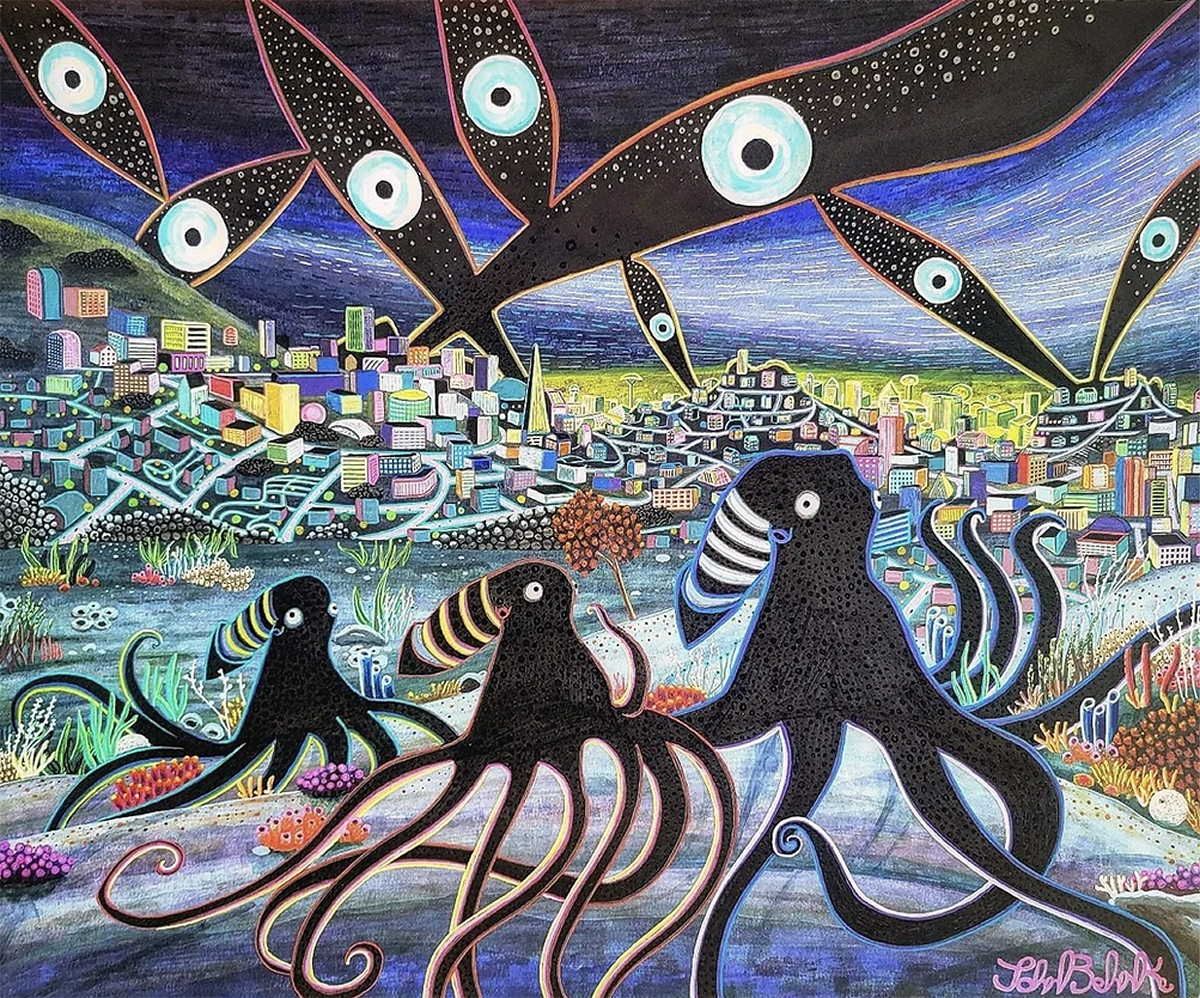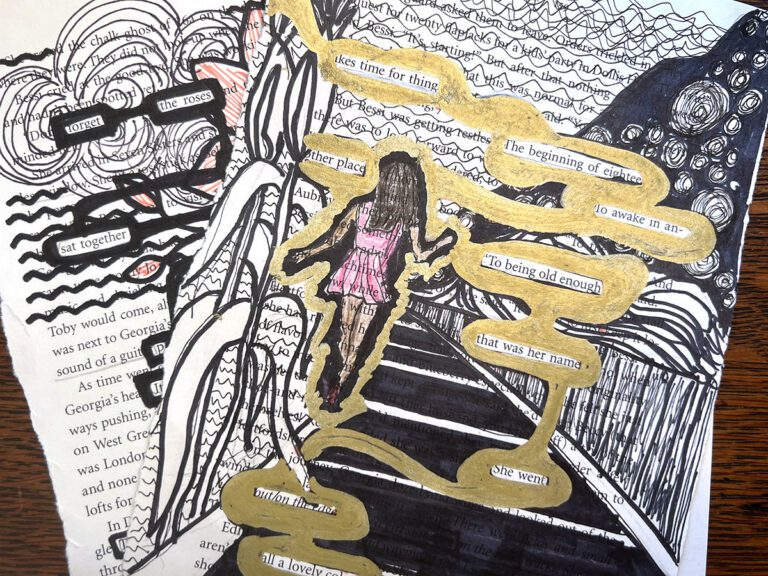Note: Be sure to review all resources and preview all artists before determining if they are appropriate to share with your students.
There’s nothing like a perfect pairing to enhance any dish or dining experience. Certain combinations of cheese and jam will bring out incredible and unexpected flavors. Plus, you can’t go wrong with classic pairings like mozzarella, basil, and tomato in a caprese salad. You can do the same in your curriculum! Serve up the perfect art and poem pairings to not only make connecting with and responding to art palatable to your students, but also curate an enriching interdisciplinary learning experience.
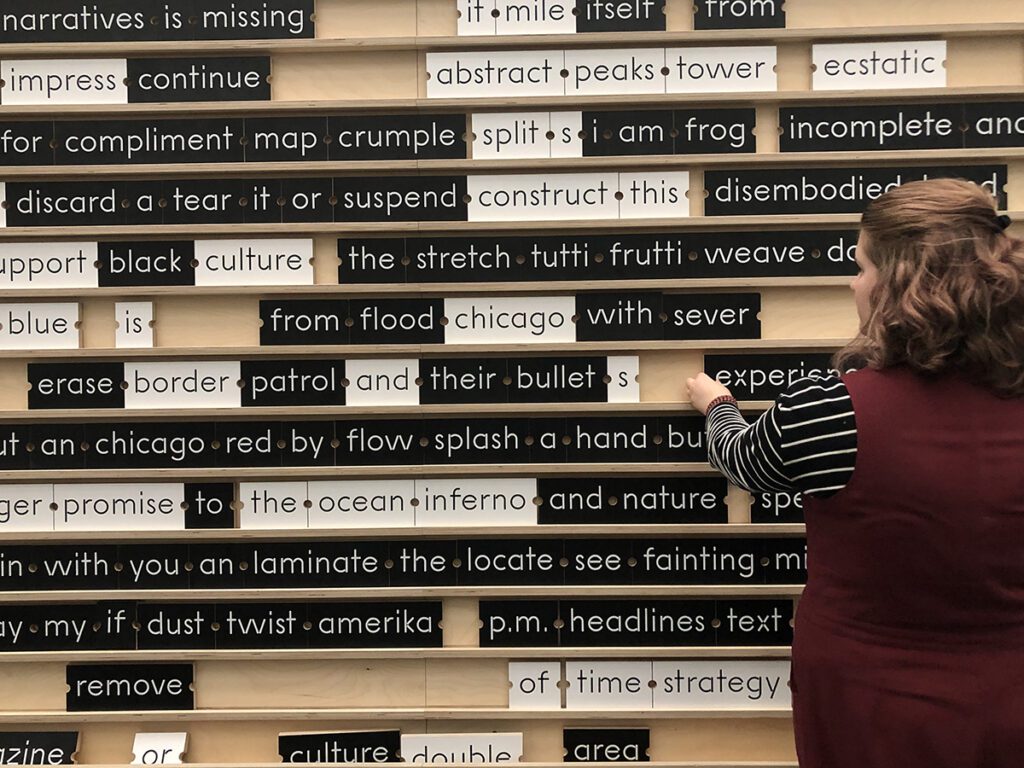
Discover how integrating poetry alongside visual art empowers students to express themselves creatively and construct a deeper understanding of both art forms.
Like visual art, poetry is a form of communication that conveys emotions, ideas, and experiences through language and imagery. Studying poetry enhances students’ ability to express themselves creatively and thoughtfully through visual art, writing, or discussions. Poetry also provides a rich source of inspiration for artistic exploration. It can spark students’ imaginations and encourage them to experiment with new techniques and mediums.
When you incorporate poetry, it:
- Enhances critical thinking skills when students analyze and compare visual and literary elements.
- Fosters creativity by inspiring students to form their own interpretations of shared themes and experiences.
- Cultivates empathy and emotional intelligence through diverse perspectives, experiences, and cultural contexts.
- Stimulates meaningful discussion with symbolism, metaphor, and narrative in art and language.
- Deepens understanding and appreciation of art and poetry as interconnected forms of creative expression.
Infuse poetry into your curriculum to bring connecting with and responding to art to a new level! Choose one of the art and poem pairings below to explore with your students.
Access an artist bio for any artist on the list below in FLEX Curriculum. Each artist bio is at an eighth-grade reading level and includes a brief history, a list of notable artworks and achievements, famous quotes, and more. For information on how to get these artist bios for your classroom, fill out this short contact form.
1. The Persistence of Memory by Salvador Dalí & Remember by Joy Harjo
Salvador Dalí’s painting, The Persistence of Memory, prompts reflection on the elasticity of time and the mutable nature of reality. The image of melting clocks invites viewers to ponder the transience of moments. In Joy Harjo’s poignant poem, Remember, the opening line “Remember the sky that you were born under” echoes the same theme of memory and the passage of time. Like Dalí’s imagery, Harjo’s verse encourages thoughtful reflection about the fleeting nature of existence and the importance of cherishing each minute.
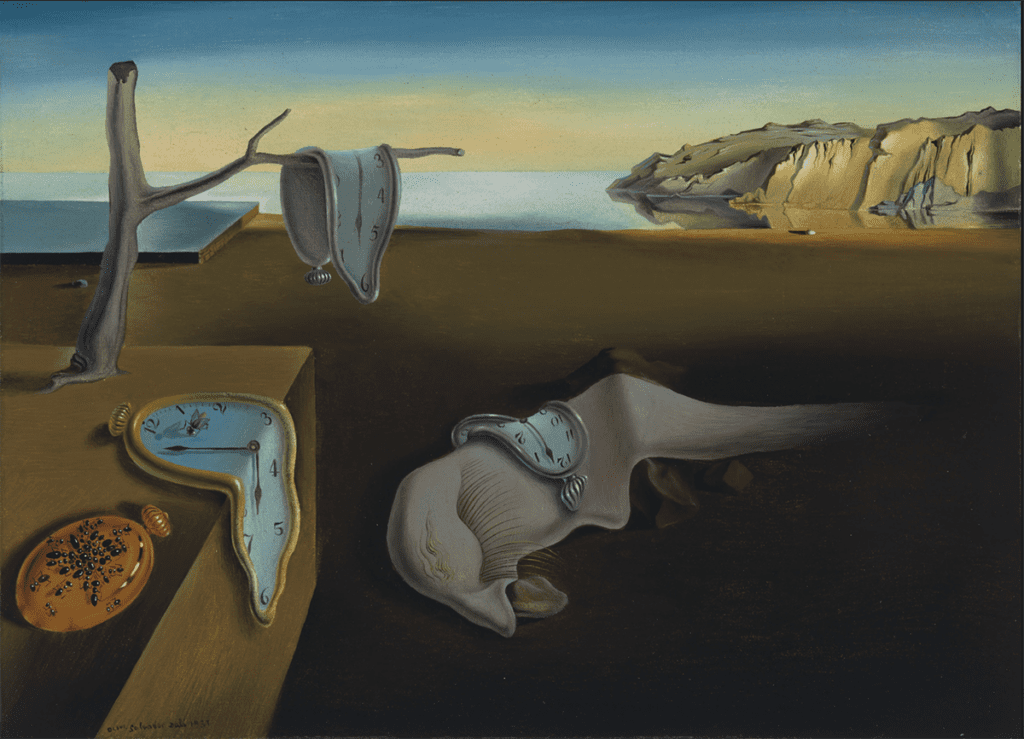
2. Bottle Cap Snake by Felipe Archuleta & Mother Doesn’t Want a Dog by Judith Viorst
Felipe Archuleta’s whimsical sculpture, Bottle Cap Snake, captivates with its playful and imaginative use of found materials. Crafted from discarded bottle caps and salvaged objects, the artwork exudes a sense of resourcefulness and creativity. Judith Viorst’s humorous poem, Mother Doesn’t Want a Dog, reflects a similar lighthearted tone with a surprise ending where the author reveals why “she’s making a mistake.” Archuleta’s sculpture embodies Viorst’s subject matter and invites the audience to embrace the joy found in unconventional approaches.
To explore this pairing with your students, make art with recycled, repurposed, and found materials. The Creating with Unexpected Materials Pack in PRO Learning gives you all of the ideas you’ll need to start your upcycled art projects.
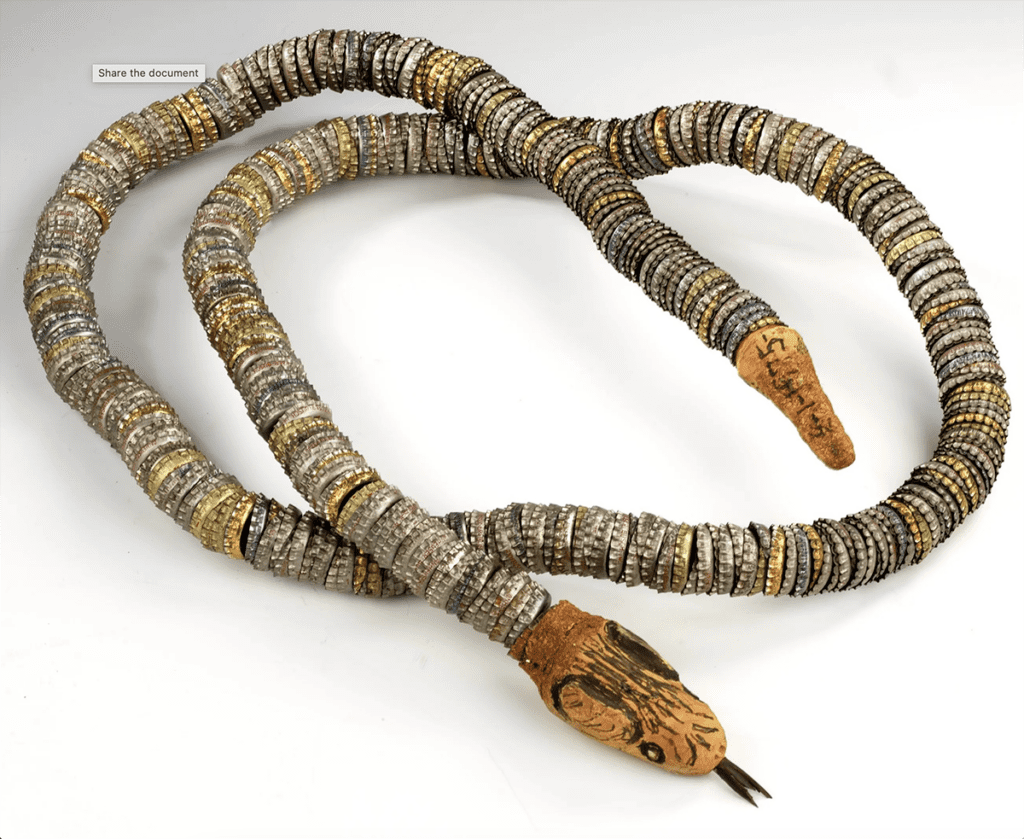
3. Path in the Wheat Fields by Claude Monet & The Road Not Taken by Robert Frost
Claude Monet’s masterpiece, Path in the Wheat Fields at Pourville, is the essence of serenity and contemplation. It depicts a winding path through golden wheat fields. The path imagery in Monet’s painting echoes the theme of choices and journeys found in Robert Frost’s iconic poem, The Road Not Taken. The painting and the poem evoke the idea of choosing one’s path in life, whether through a literal landscape or the symbolic journey of decision-making, on a well-worn path or “the one less traveled by.”
To explore this pairing with your students, brush up on specific media, techniques, and vocabulary in PRO Learning’s Impressionism at the Elementary Level Pack. Create impressionistic paintings to engage your students with art history and pick a project from FLEX Curriculum’s Impressionism Techniques Collection.
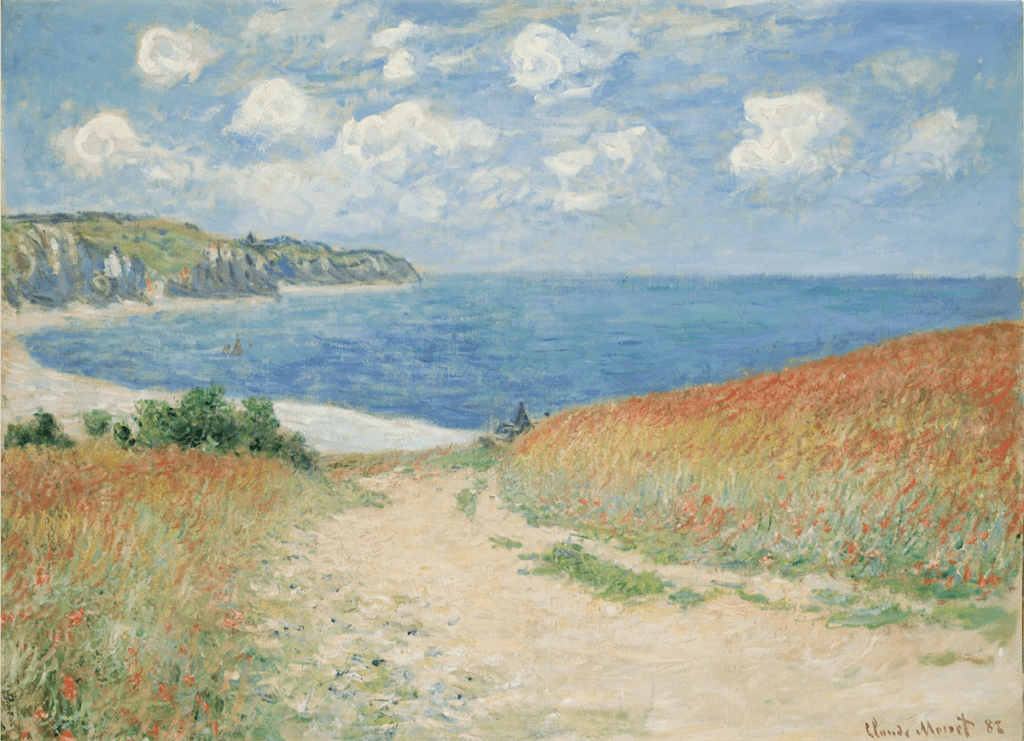
4. Believing in Kings by Delita Martin & The Bronze Legacy by Effie Lee Newsome
Delita Martin’s powerful artwork, Believing in Kings, has themes of heritage, identity, and resilience, evident in the intricate layers of mixed media and the figure’s striking presence. The imagery in Martin’s work brings to mind the cultural pride and strength found in Effie Lee Newsome’s poem, The Bronze Legacy. Like Martin, Newsome’s bold declaration, “’tis a noble gift to be brown,” celebrates the richness of African American heritage and the importance of taking pride in the past while embracing the future.
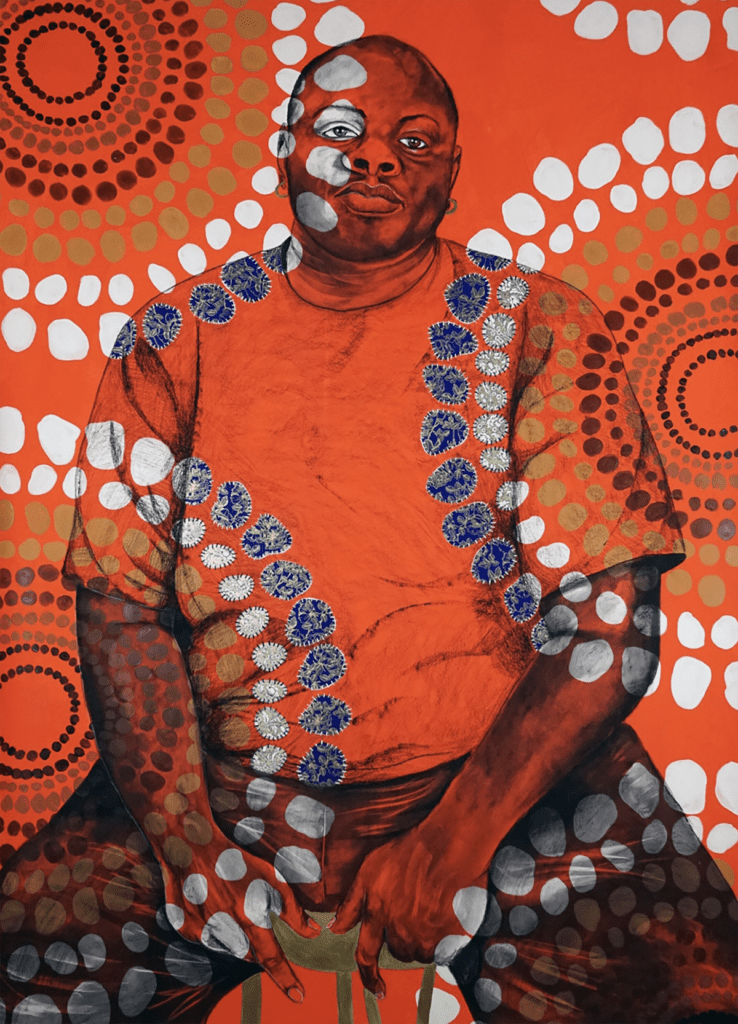
5. Queen by Audrey Flack & From Blossoms by Li-Young Lee
In Audrey Flack’s painting, Queen, symbols like a pocket watch to represent the march of time and a flower with fading beauty comment on the inevitability of change and death. Li-Young Lee’s poem, From Blossoms, employs ripe peaches as a parallel metaphor for the beauty in simple joys and the importance of seizing moments of vitality and gratitude. Both works contemplate life’s impermanence and the necessity of cherishing fleeting moments of loveliness and connection “from joy to joy to joy, from wing to wing, from blossom to blossom.”
To explore this pairing with your students, dive deep into symbolism and vanitas-inspired still lifes. Learn how to set students up for success in the Introduction to Still Life and Advanced Approaches to Still Life Packs in PRO Learning.
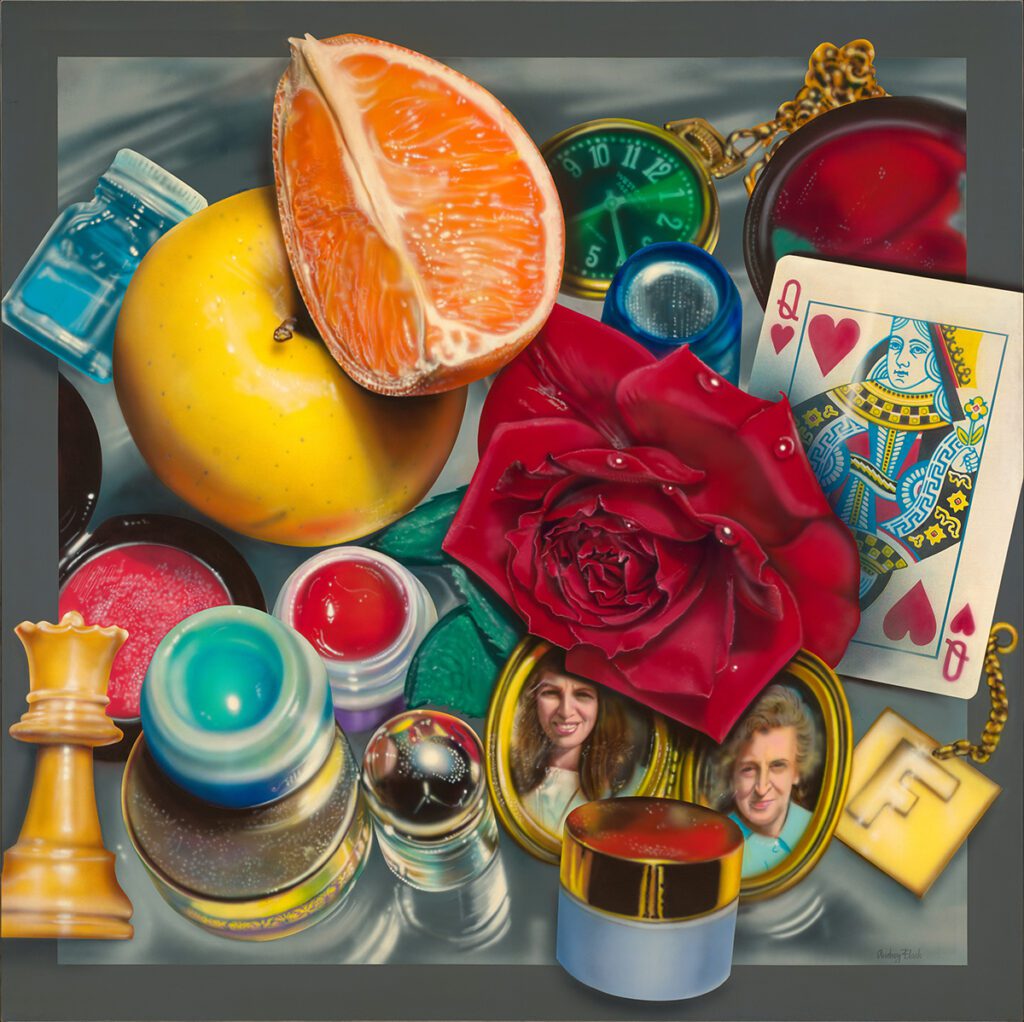
6. Guardians of the Void by John Behnke & The Land of Nod by Robert Louis Stevenson
John Behnke’s, Guardians of the Void, depicts ethereal figures floating amidst swirling colors and shapes and evokes otherworldly exploration. Robert Louis Stevenson’s poem, The Land of Nod, transports readers to a place with fantastical creatures and surreal landscapes. Both works explore the realm of dreams and the mysteries of the mind where “the strangest things are there for me.” Together, they invite viewers and readers to journey into the depths of the unconscious, where reality blends with fantasy and imagination knows no bounds.
To explore this pairing with your students, experiment with various fantastical themes and learn about the influence of Surrealism in art with the Introduction to Surrealism Collection in FLEX Curriculum.
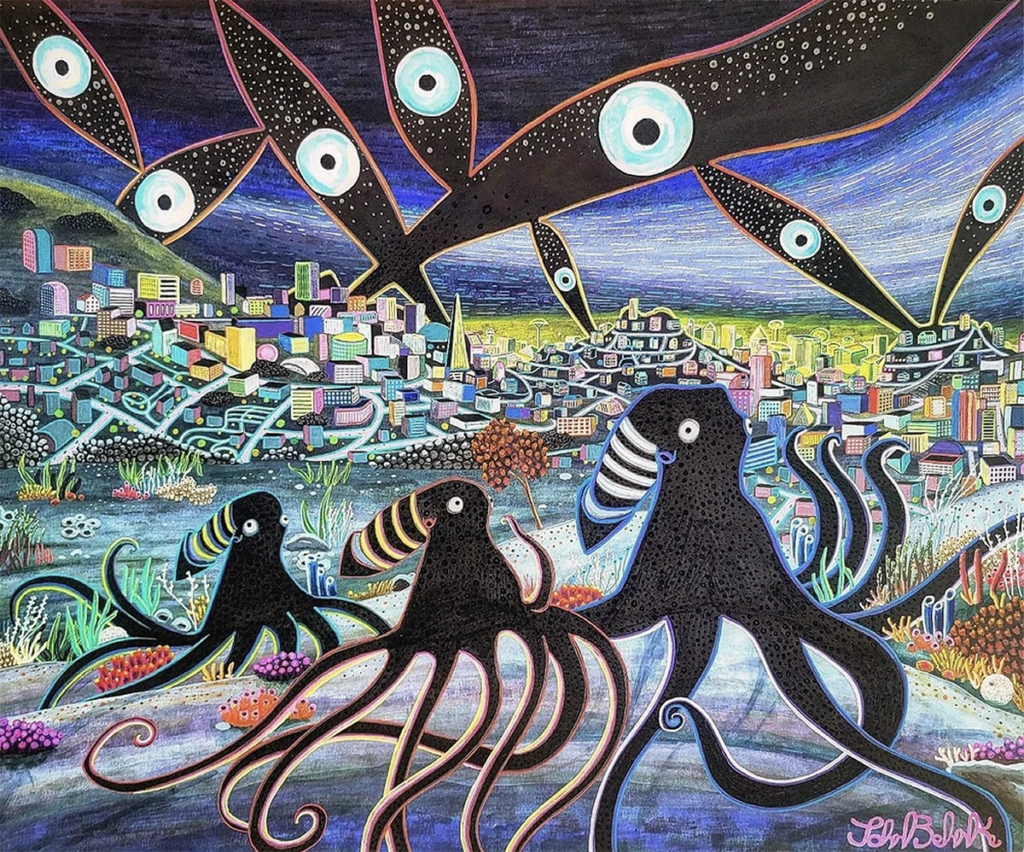
7. Suspended Time by Myrna Baez & The Peace of Wild Things by Wendell Berry
In Myrna Baez’s Suspended Time, there is a moody yet serene landscape where stillness hangs in the air and a lonely figure drinks in the serenity of the night. Wendell Berry’s poem, The Peace of Wild Things, transports readers to a place of solace amidst the wild elements of nature. Just like the figure in Baez’s scene, the speaker finds respite from the worries and anxieties of the human world. These works invite everyone to embrace the restorative power of nature’s beauty and “come into the peace of wild things.”
To explore this pairing with your students, incorporate nature into your artmaking. The projects in FLEX Curriculum’s Nature with Mixed Media and Creating with Nature Collections foster the same oneness with nature depicted in these two works.
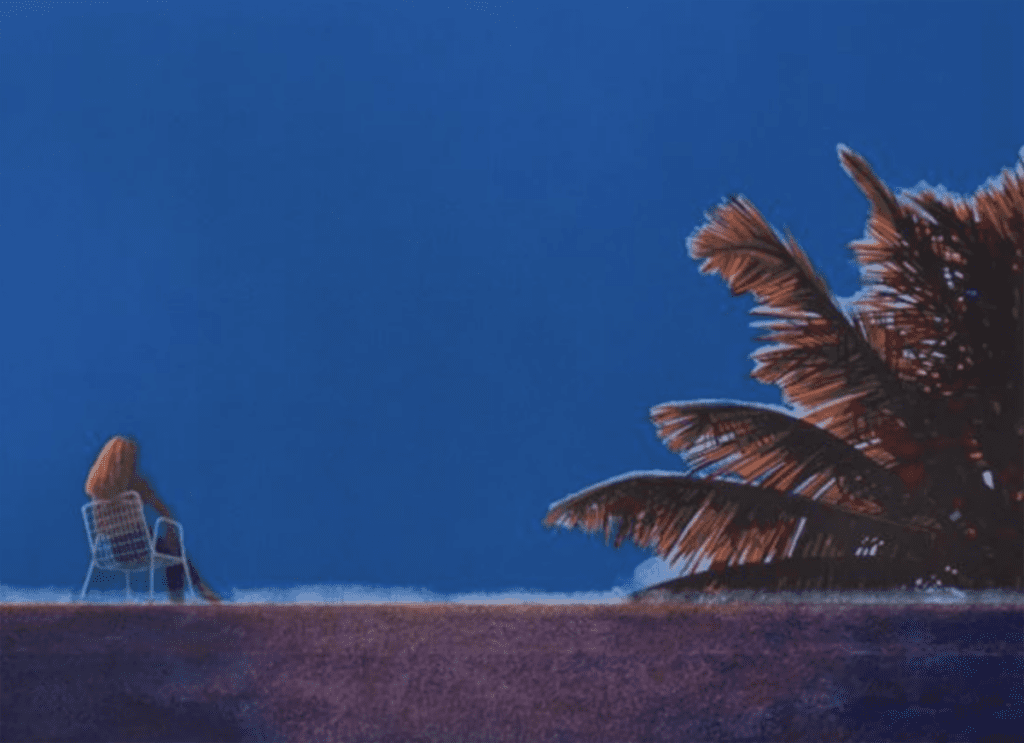
8. Eye Love by Corita Kent & Citizenship by Javier Zamora
Representing the letter E in Corita Kent’s Circus Alphabet series, the artwork, Eye Love, reflects her desire to reconcile love for her country with a commitment to justice. Javier Zamora dives into a similar sentiment in his poem, Citizenship. He ponders the immigrants and homeless at the Mexican border. Both the artwork and the poem challenge viewers and readers to contemplate the true meaning of patriotism and citizenship and urge them to confront societal injustices.
To explore this pairing with your students, hone in on historical and contemporary issues of freedom and social change. Discover projects in FLEX Curriculum’s Freedom and Social Change and Stories from Latino Artists Collections.
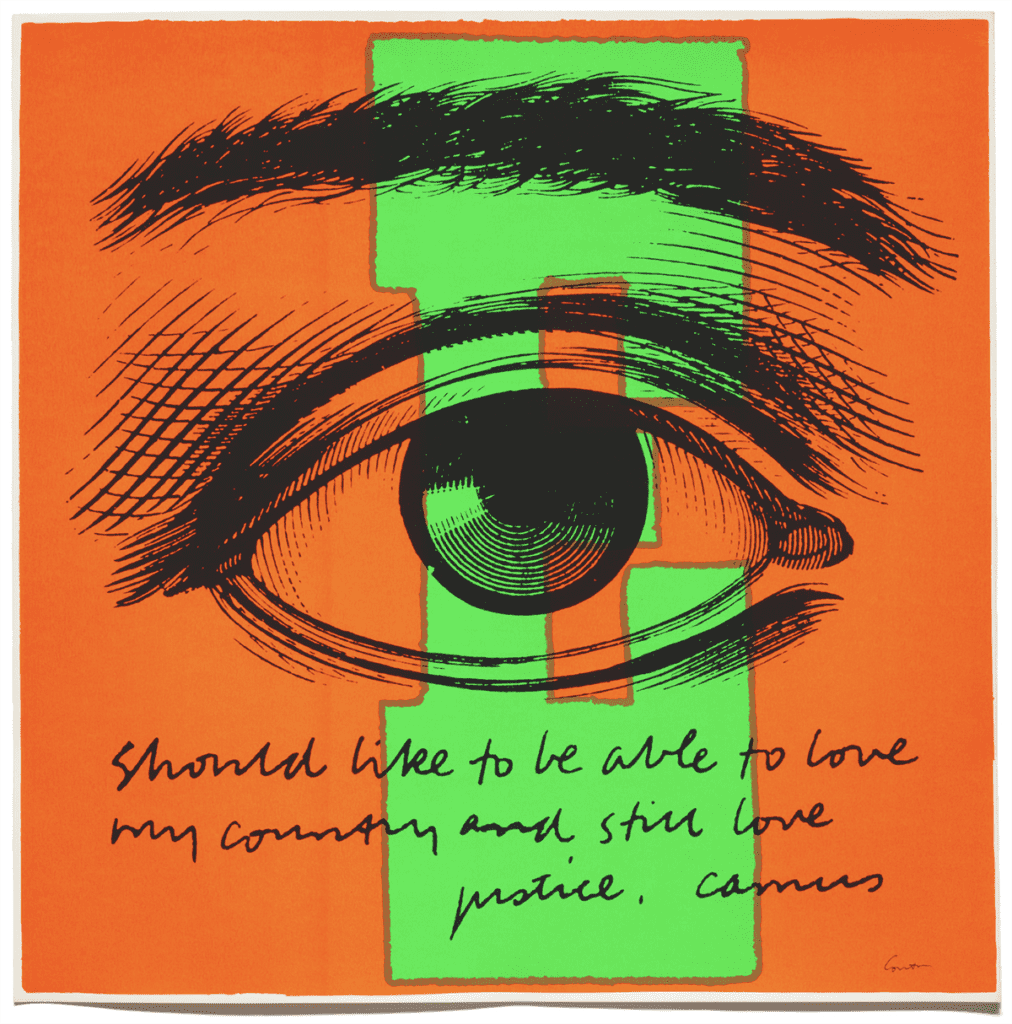
9. Pansies in Washington by Alma Thomas & Color by Christina Rossetti
Pansies in Washington by Alma Thomas and Christina Rossetti’s poem, Color, both celebrate the vibrancy and beauty of color. Thomas’s artwork distills pansies into an abundance of color. Rosetti attributes the color red to the image of “a poppy’s red in its barley bed,” highlighting how color correlates to sensory experiences. Together, the artwork and the poem evoke a sense of wonder and appreciation for the kaleidoscope of colors surrounding us.
To explore this pairing with your students, focus on transforming color into words, experiences, and images. Use the resources in the Transformation and Color Collection in FLEX Curriculum to guide you. Additionally, piggyback off these works for a fresh way to teach the color wheel.
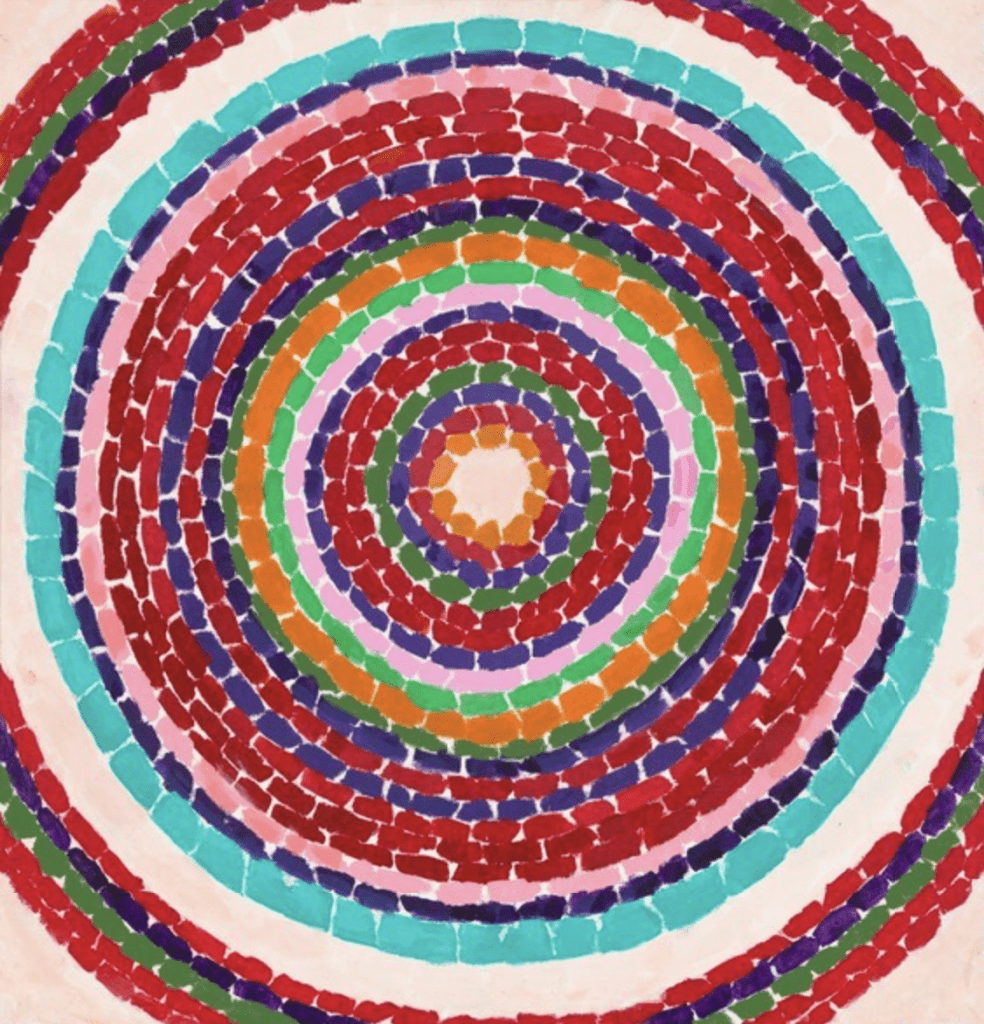
10. Winter Woman by Jason Garcia & How to Triumph Like a Girl by Ada Limón
Jason Garcia’s Winter Woman portrays a female warrior adorned with winter symbols. It touches on women’s resilience to endure harsh conditions. Ada Limón’s poem, How to Triumph Like a Girl, also celebrates the power of women by likening them to horses, “as if this big dangerous animal is also a part of me.” Both pieces offer a powerful tribute to women’s strength and emphasize admiration for the enduring female spirit. It prompts viewers and readers to embrace their inner power and triumph in adversity.
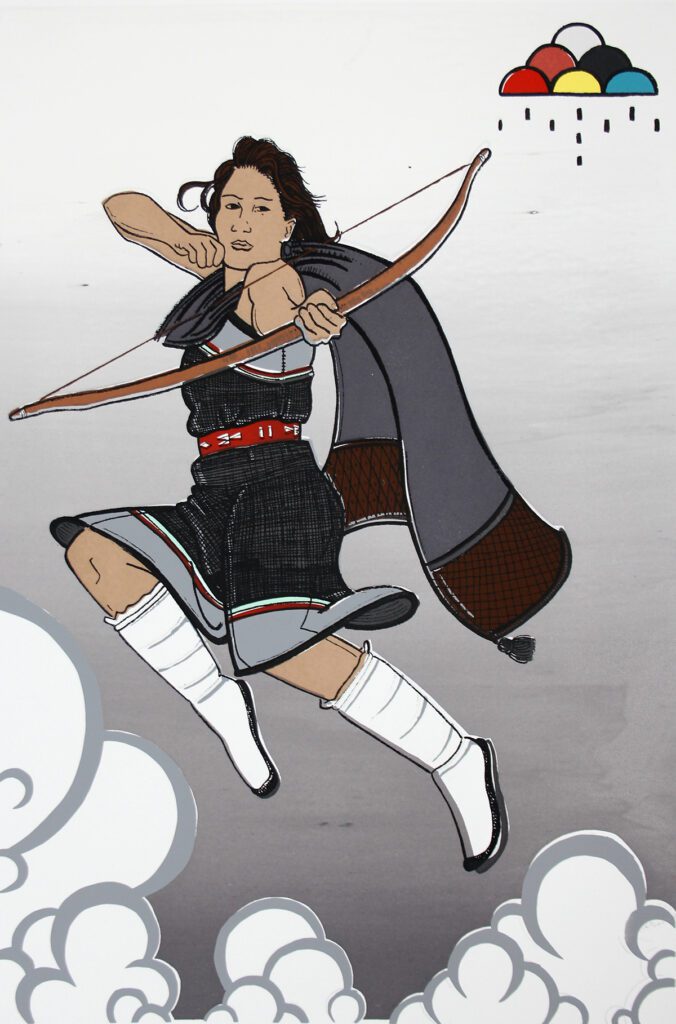
11. Puffy Takes a Bad Turn by Chris Theiss & Where the Sidewalk Ends by Shel Silverstein
Chris Theiss’ adorable ceramic sculpture, Puffy Takes a Bad Turn, is reminiscent of children’s books where inanimate objects come to life. Shel Silverstein’s poem, Where the Sidewalk Ends, memorializes a realm beyond the sidewalk’s end where such imaginative possibilities live. Both works celebrate the whimsical world of childhood where “the grass grows soft and white” and “the sun burns crimson bright.” They capture the boundless creativity and curiosity of youth and evoke a sense of wonder and possibility.
To explore this pairing with your students, experiment with unique ceramic techniques like Theiss’ sgraffito method. The Innovative Ceramic Methods Pack in PRO Learning offers everything you need to know about this technique and others.
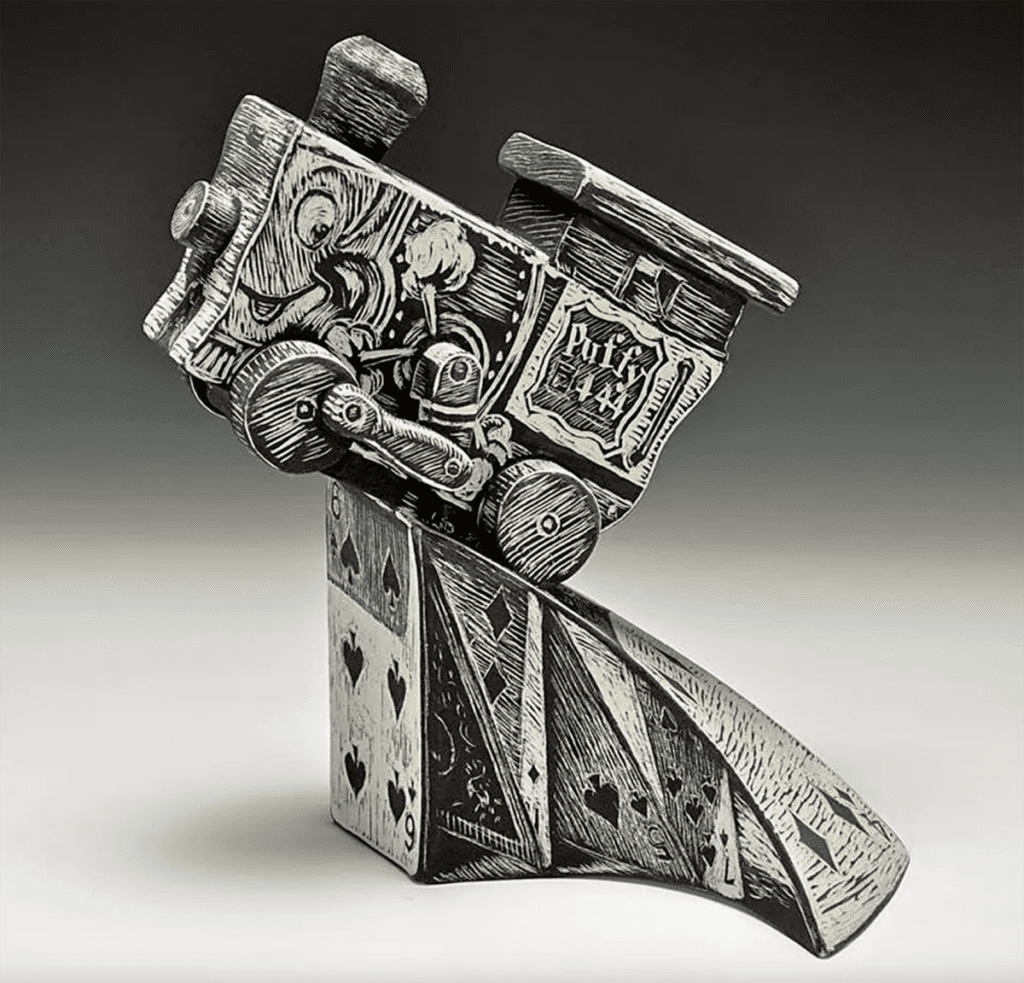
12. Landscape with a Stone Bridge by Rembrandt van Rijn & Wild Geese by Mary Oliver
Rembrandt van Rijn’s painting, Landscape with a Stone Bridge, and Mary Oliver’s poem, Wild Geese, conjure themes of loneliness, belonging, and existence. Rembrandt’s tranquil landscape visually represents accepting vulnerabilities and finding solace in the simple beauty of existing. Oliver’s poem aligns and pleads, “Tell me about despair, yours, and I will tell you mine.” “Meanwhile, the world goes on,” just as the water in Rembrandt’s river continues to flow. Both works encourage viewers and readers to release their worries. It reminds them they are part of something vast and meaningful.
To explore this pairing with your students, dive into all things landscape and emphasize themes of place and belonging. FLEX Curriculum’s Exploring My Community and Artistic Practices Intermediate Collections offer students opportunities to make meaningful connections to the people and places around them.
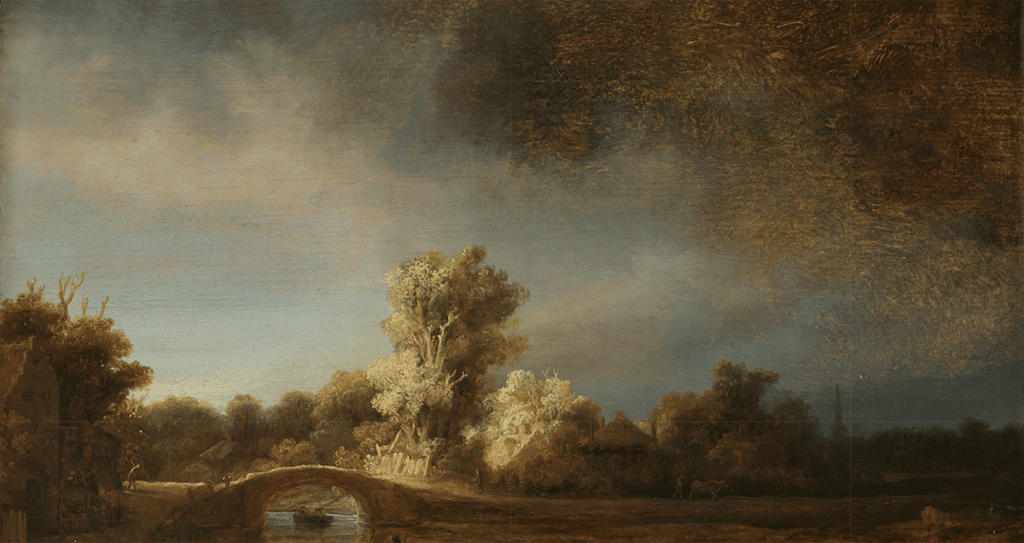
Incorporating art and poem pairings into your art curriculum enhances critical thinking, fosters creativity, and cultivates empathy. Contemplate the importance of recollection with The Persistence of Memory by Salvador Dalí and Remember by Joy Harjo. Venture into the depths of the unconscious with John Benke’s Guardians of the Void and Robert Louis Stevenson’s The Land of Nod. Art and poem pairings provide a rich exploration of themes and experiences. It creates deep connections between two content areas through meaningful discussion. It also spurs the imagination and artmaking with boundless avenues to communicate images and ideas. Expand your students’ artistic horizons and serve these perfect pairings in your art room. Bon Appétit!
What art and poem pairing will you use to inspire your next lesson?
How do you make connecting with and responding to art engaging and immersive?
Magazine articles and podcasts are opinions of professional education contributors and do not necessarily represent the position of the Art of Education University (AOEU) or its academic offerings. Contributors use terms in the way they are most often talked about in the scope of their educational experiences.
